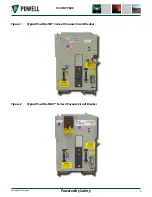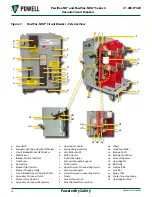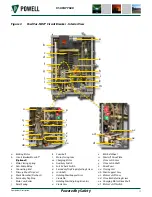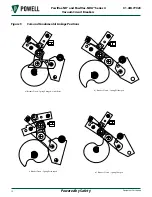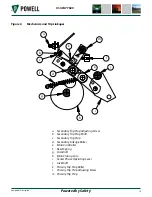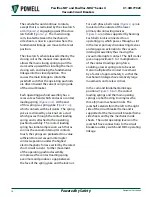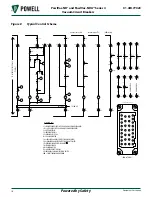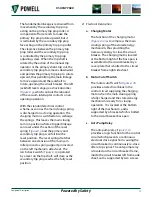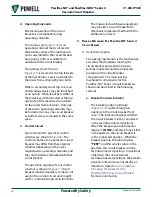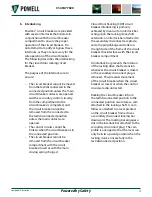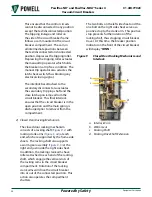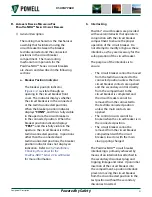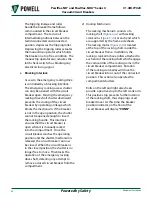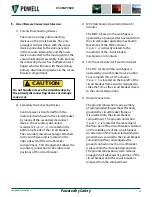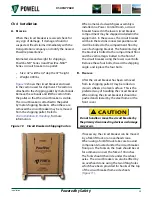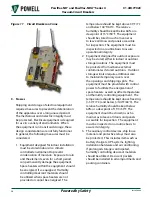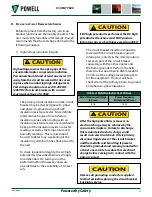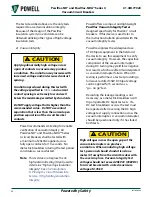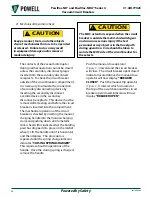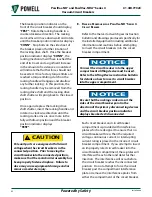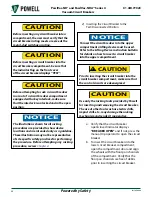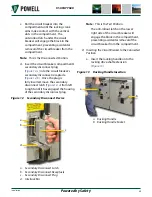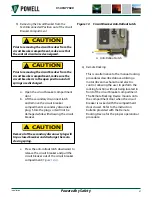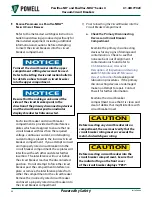
Powered by Safety
®
23
Equipment Description
01.4IB.77020
e. c
IrcuIt
B
reAker
c
oMpArtMent
I
nterfAceS
1) Primary Disconnecting Devices
There are six primary disconnecting
devices on the circuit breaker. They are
arranged, two per phase, with the upper
device connected to the stationary end
of the vacuum interrupter, and the lower
device connected to the moving end of the
vacuum interrupter assembly. Each primary
disconnecting device has multiple contact
fingers which will mate with the stationary
primary disconnecting devices in the circuit
breaker compartment.
!
CAUTION
Do not handle or move the circuit breaker by
the primary disconnecting devices as damage
may occur.
2) Secondary Disconnecting Devices
Control power is transferred from the
metal-clad switchgear to the circuit breaker
by means of the secondary disconnect
device. The secondary disconnect
receptacle
is located on the
bottom right side of the circuit breaker.
The secondary disconnect plug is attached
to the switchgear and is located on the
right side wall of the circuit breaker
compartment. This arrangement allows the
secondary connection to be visible in all
positions of the circuit breaker.
3) MOC (Mechanism Operated Cell Switch)
Actuator
The MOC, located in the switchgear, is
operated by a plunger which extends from
the circuit breaker operating mechanism.
Movement of the MOC actuator
is directly related to the
movement of the circuit breaker
mechanism and contacts.
4) TOC (Truck Operated Cell Switch) Actuator
The TOC, located in the switchgear, is
operated by circuit breaker truck position.
To accomplish this, a TOC actuator
is located on the top left of the
circuit breaker frame and it is designed to
strike the TOC as the circuit breaker travels
to the connected position.
5) Ground Connection
The ground connection is an assembly
of spring-loaded fingers that effectively
grounds the circuit breaker frame as
it is inserted into the circuit breaker
compartment. The ground connection
is located at the rear edge of
the floor pan of the circuit breaker centered
on the middle pole of the circuit breaker.
An extension of the metal-clad switchgear
ground bus is secured to the circuit breaker
compartment floor and engages the
ground connection as the circuit breaker
is placed into the disconnected position.
The ground connection system remains
engaged in all subsequent positions of the
circuit breaker until the circuit breaker is
removed from the compartment.

